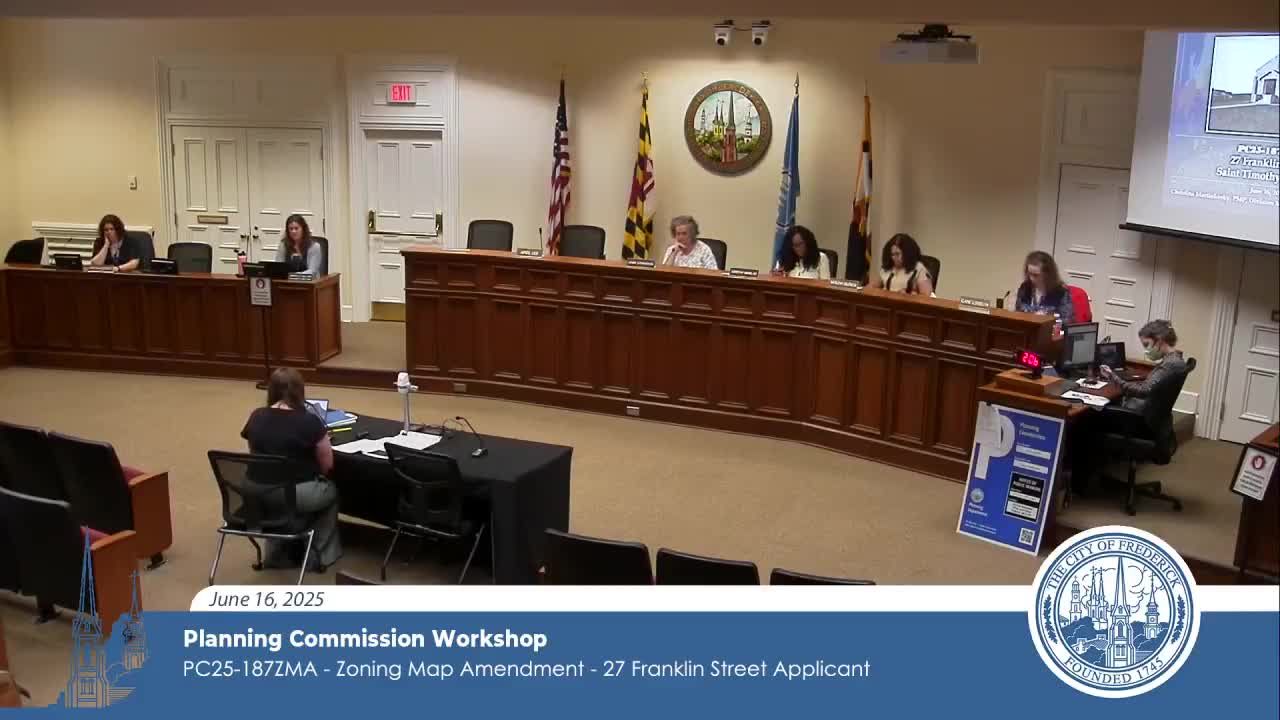Frederick Heritage Workshop reviews Saint Timothy's Chapel demolition proposal
June 16, 2025 | Frederick City, Frederick County, Maryland
Thanks to Scribe from Workplace AI , all articles about Maryland are free for you to enjoy throughout 2025!

This article was created by AI using a video recording of the meeting. It summarizes the key points discussed, but for full details and context, please refer to the video of the full meeting. Link to Full Meeting
The workshop was a precursor to the Historic Preservation Commission's review of the application, emphasizing the importance of adhering to deadlines established by the land management code. The Planning Commission and the Historic Preservation Commission act as recommending bodies, while the final decision regarding the chapel's fate will rest with the city council.

Before you scroll further...
Get access to the words and decisions of your elected officials for free!
Subscribe for FreeDuring the meeting, historical context was provided about the chapel and its significance to the community. It was noted that Frederick's history dates back to 1745, with the English church evolving into the Episcopal church by 1813. The chapel's architecture reflects its roots in the Church of England, showcasing English Gothic design.
The discussion also highlighted the role of churches in the urban development of Frederick, illustrating how they were central to community life in the 19th century. Maps from the 1840s demonstrated the clustering of churches within the city center, indicating their importance to the population, which was around 5,000 at the time.
As the meeting progressed, it was noted that the chapel had been a vital part of the community from its construction until 2015, providing essential services to residents, particularly in the early suburban development of Frederick. The workshop concluded with a call for further consideration of the chapel's historical significance as the review process moves forward.
The next steps will involve the Historic Preservation Commission's evaluation, followed by a recommendation to the city council, which will ultimately decide the chapel's future.
Converted from Frederick - Planning Commission Workshop - Jun 16, 2025 meeting on June 16, 2025
Link to Full Meeting
Comments
View full meeting
This article is based on a recent meeting—watch the full video and explore the complete transcript for deeper insights into the discussion.
View full meeting




